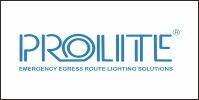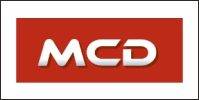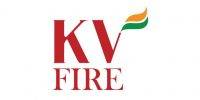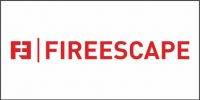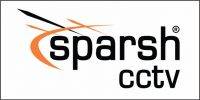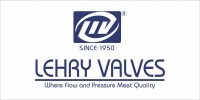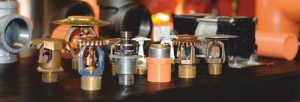 Fire Protection
Fire Protection
Fires in data centers and / or other critical facilities containing electronic equipment are more common than anyone realizes or is admitted in the mission critical industry
Most fires are small, handled by facility personnel, and do not get reported to the authorities. It is believed among the fire protection professionals, that only approximately 40% of fire incidents receive some kind of reporting; and the remaining 60% of fires are kept undocumented. Most fire incidents are kept confidential since it would harm a data center's reputation to be associated with exposure to combustion or faulty wiring installation.
The National Fire Protection Association's (NFPA) book, published in July 2001, “Special Analysis Package, Computer Equipment and Computer Areas” by John R. Hall, Jr., indicates that between the years 1994 and 1998, an average of 1,042 computer facilities fires were reported each year. These fires were defined as “structure fires starting with electronic equipment”.
While more recent data is unavailable, it is believed that the fire incidents have increased since the late 1990s, as the electrical loads and densities per rack have increased between 400% and 800%, from an average of 50 W/Sq. Ft in 1998 to 200 – 400 W / sq. ft. in 2012.
As a result of these fires, critical facilities designers should carefully consider the best combination of fire alarm and fire protection / suppression systems for each individual environment and occupancy.
At a minimum, the variables for consideration include:
1. Occupancy of the entire facility
2. Equipment being protected
3. Environment variables
4. Raised floors and drop ceilings plenum uses
5. 24 / 7 or regular occupancy premises
6. Electrical load density
7. Cold / hot isle containments
8. Location of the critical facility (urban, suburban or rural)
9. Availability and response of local fire brigade
10. Many other variables that may be unique to a particular facility
The design of fire protection systems should also comply with the local building codes, the NFPA Standards, and the local AHJ. Aside from fulfilling these bare minimum requirements, it is also important to provide the best protection for the data center's valuable assets, and eliminate or at least minimize the down-time of the facilities operation.
This paper offers recommendations that will cover a wide variety of protection for critical facilities. It should be noted that most of the detection and fire protection systems designs are prescriptive and should be designed in accordance with the governing codes and standards, and the manufacturer's recommendations.
Careful considerations need to be applied to each individual case, as all of the unique variables must be taken into account to benefit the protected environment. For example, considerations for a high density environment can include whether aisle containment is used and whether the power and mechanical cooling is interrupted / shut down during emergency events. Each of these variables will play a role in the choices for fire protection systems suitable for a particular and unique facility.
While the fire protection efforts in critical facilities consists of a combination of both fire detection and fire suppression, this article will only focus on the most frequently considered fire suppression systems in the critical facilities.
Once a fire is detected, fire suppression systems are used to extinguish and mitigate the potentially destructive effects of fire. A number of agents are available to accomplish this, each with specific advantages applicable to a particular circumstance.
Fire suppression systems for high-reliability environments fall into two general categories: those using clean agents and those using water.
Clean Agent Systems
Clean agent systems combat fire by reducing the oxygen content of the space, absorbing the heat of the fire, interfering with the chemistry of combustion, or a combination of these activities. While the clean agent systems typically rely on fire detection and alarm system for actuation, there are some self-actuating small-volume systems available.
In most cases, the smoke or fire detectors would first sense the presence of fire in the protected facility. The detection and control panel would then sound an alarm, shut down air handlers (if so programmed), disconnect power from the protected equipment (if so programmed), and then release the agent into the protected area.
Carbon Dioxide
Carbon dioxide (C02) offers a number of advantages compared to other non-water based agents. When properly designed, engineered, and installed, C02 fire suppression systems will not normally damage electronic equipment.
- C02 leaves no reside associated with its use as a fire-suppressing agent.
- When properly ventilated, the gas escapes to the atmosphere after the fire has been extinguished.
- C02's major drawback is its unsuitability for use in occupied spaces.
- FM-200
- HFC-227 (FM-200), chemically known as heptafluoropropane. It is a replacement for the ozone depleting Halon 1301 used extensively before 1994. General properties are:
- No ozone depletion potential (its ODP is zero).
- Safe for use for occupied spaces.
- Will not damage sensitive electronic equipment.
Leaves no reside.
The extinguishing agent is typically stored in cylinders and is delivered to distribution nozzles through a system piping network.
Novec 1230
Novec 1230 is an environmentally friendly Halon replacement alternative to HFCs. It can be used in occupied areas. Novec 1230 fluid can effectively be applied in streaming, flooding, inerting and explosion suppression applications.
- No ozone depletion potential.
- Safe for use for occupied spaces.
- Leaves no reside.
The extinguishing agent is typically stored in cylinders and is delivered to distribution nozzles through a system piping network.
Ecaro-25
ECARO-25 or FE-25 is a clean agent fire extinguishing chemical and is a recognized alternative to Halon 1301. Ecaro-25 provides an effective replacement to Halon. This agent can work in existing Halon piping networks, requiring only replacement of the nozzles and containers to transform a Halon 1301 system to an Ecaro-25 system.
- Non-corrosive.
- Electrically nonconductive.
- Leaves no residue.
- Inergen
Inergen extinguishing systems are designed for total flooding protection against Class A surface burning, Class B flammable liquid, and Class C fires.
The action of Inergen is to lower the oxygen content of the space below the level that supports combustion. It is a mixture of three naturally occurring gases; nitrogen (52%), argon (40%), and carbon dioxide (8%). It is suitable for hazards where an electrical, non-conductive medium is essential or desirable; where clean-up of other agents presents a problem; where hazard obstructions require the use of a gaseous agent; or where the hazard is normally occupied and requires a non-toxic agent.
When the Inergen agent is discharged into a room, it extinguishes fire by lowering the oxygen content below the level required to support combustion. It reduces the oxygen content of a space from its normal 21% to approximately 12.5% while increasing the carbon dioxide content from 1% (normal) to about 4%.
Water-Based Systems
All fire sprinkler systems are water based; they differentiate in the passive (non-discharge) system condition: wet system piping is filled with water or water based solutions; dry systems have water introduced through a number of means.
Wet Pipe Sprinkler System
Wet pipe sprinkler systems are the most common and most reliable type of sprinkler protection. The entire piping network is filled with water under pressure in all wet pipe sprinkler systems. Upon the operation of a fusible link or other type of thermal element, water is discharged over the protected hazard.
Since there are no delays in sprinkler system operation, wet sprinkler systems are preferred by authorities having jurisdiction. Wet sprinkler systems are the most economically sound. Wet sprinkler systems are limited to 52,000 sq. ft. per system.
Dry Pipe Sprinkler System
Dry pipe sprinkler systems are usually provided in non-heated buildings and / or in areas that may be exposed to freezing temperatures. The piping network in the dry pipe systems is filled with supervised pressurized air or nitrogen gas. Similar to wet pipe systems components, fusible link type sprinkler heads are used. The operation of a sprinkler head causes an air pressure drop in the system, opening a clapper on a dry pipe valve and allowing water to flow through the system and discharge through any open sprinkler heads.
Dry pipe systems are more complex than wet pipe systems and cause a delay in water discharge over the hazard. Code compliant dry pipe systems do not exceed 750 gallons of capacity and must deliver water to the most remote sprinkler head within 60 seconds.
Deluge Sprinkler System
Deluge sprinkler systems are required where the hazard is substantial and great amounts of water are required to control a fire and / or to separate two fire hazards. A typical installation would be protection inside a fuel storage tank room.
A deluge system contains open sprinkler nozzles connected to a non-pressurized piping system. Deluge systems are controlled by a deluge valve, which is monitored by a detection system. Operation of a detection device will open the deluge valve and allow water flow thru all the sprinkler nozzles simultaneously.
Pre-Action Sprinkler System
Pre-action systems are more complex than wet and dry pipe systems as they contain more components and equipment. Pre-action systems require specialized knowledge and experience in design and installation. The inspection, testing and maintenance activities needed to ensure their reliability and functionality are also more involved. Pre-action sprinkler systems require a detection system covering the same protected area for operation.
There are three basic types of pre-action systems, which are identified by their mode of operation: non-interlock, single interlock and double interlock. Additional variations, such as the use of a cross-zoned smoke detection system, are possible.
A non-interlocked system admits water to the sprinkler piping upon the operation of a detection device or when a sprinkler activates.
A single interlocked system admits water to the sprinkler piping upon the operation on a detection device. Sprinkler activation will only cause a trouble alarm (due to the drop in supervising air pressure).
A double interlocked system admits water to the sprinkler piping only upon the operation of both a detection device (initiating a fire alarm and opening the valve) and a fusible sprinkler element (to release the air pressure in the pipe). Activation of a detector will only initiate a fire alarm; opening of a sprinkler will only initiate a trouble alarm.
Fire Cycle
This system provides a water-based fire suppression system with an automatic shut-off. The system can be wet or pre-action, single or double interlocked. Heat sensors via a control panel control the automatic valve. During system discharge, when the sensors no longer detect heat, the valve cycles closed, but will automatically reopen if the sensors' temperature becomes elevated again. There is a minimum discharge timer in the control panel to assure adequate wetting of the fire with the initial discharge.
The action of the control valve results in a smaller discharge of water into the affected space, with consequent lighter water damage and reduced post-incident cleanup.
Foam
Foam and foam-water sprinkler systems are specialized cases of wet sprinkler systems usually reserved for occupancies with high-hazard contents, and are designed and installed to protect hazards of Class A and B fires.
These systems function by injecting or inducing a concentrated expansion agent into the water flow, resulting in an increase in the discharge's volume of between 20 and 1000%, depending on the particular agent employed. The resultant aggregate of air-filled bubbles flows freely over a burning liquid surface and forms a tough, air-excluding blanket that seals volatile combustible vapors from access to air.
Water Mist
These systems require the addition of a high-pressure pump to the sprinkler system and installation of special application nozzles.
Water, under pressures of 175 to 500 psi, is forced through the specialty nozzles to form extremely small droplets, which remain suspended in the air, effectively performing the identical function of larger droplet sprinklers – absorbing the heat of a fire, thereby depriving it of one of the basic requirements for propagation.
These systems offer the advantage of the commonly available suppression medium while avoiding the hazards to delicate equipment associated with water discharge from standard sprinklers.
Vortex
The Victaulic Vortex fire suppression system is a hybrid water-based inert gas system. It is a total flooding and local application solution combining nitrogen gas and water to extinguish fires in a 3-dimensional approach without damaging property or using toxic agents.
The system utilizes inert nitrogen gas and water. The approximately 10 µm water droplets remove the heat in fires and aid in radiative and convective heat blocking.
- The nitrogen extinguishes small fires in large rooms in naturally ventilated environments.
- Nearly zero wetting of protected areas; no need for clean up or equipment replacement.
- Green design that is safe for the environment and occupants.
- Quick system recharge in place.
- Open space effectiveness; no need for assurance of room integrity.
As indicated above, there is a wide variety of fire suppressant agents that find applications in critical facilities. It is recommended that the facilities' planners / owners consult with experienced fire protection professionals to ensure that their valuable assets are properly protected with the best combination of suitable detection and suppression systems.












